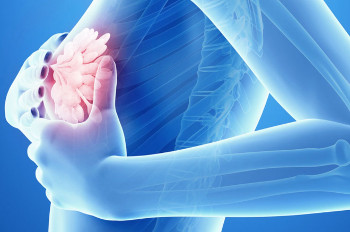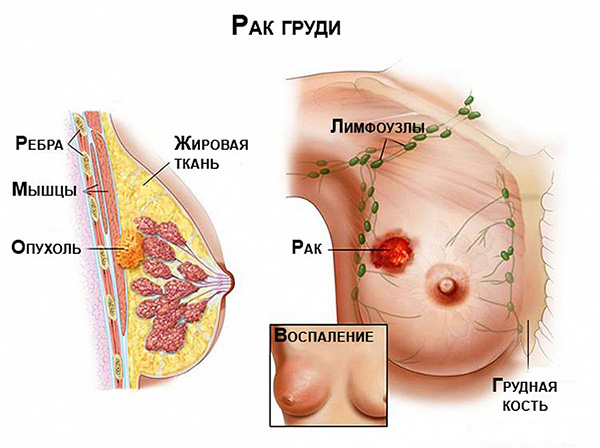
Causes
Breast cells are characterized by rapid regeneration. A large number of new cells leads to a high risk of mutational changes in them. In addition, in the breast tissue, a very high concentration of female sex hormones and a change in hormonal levels during menopause or for other reasons can become a trigger for the development of pathological processes.
Factors contributing to the development of the disease are:
- early onset of menstruation or late menopause;
- the presence of gynecological diseases;
- genetic predisposition;
- long-term use of hormonal contraceptives;
- multiple abortion and history of miscarriage;
- lack of regular sexual contact;
- lack of children;
- overweight;
- mechanical chest injuries;
- smoking;
- alcohol abuse
- contact with carcinogens;
- high doses of radiation.

Breast Cancer Classification
Depending on the size and prevalence of the tumor, the following stages are distinguished:
I - characterized by the size of the neoplasm, not exceeding 2 centimeters, and the absence of metastases.
II - the tumor grows to 5 centimeters and affects the surrounding tissue, metastases appear in the axillary lymph nodes.
III - the size of the formation exceeds 5 centimeters, and it affects the muscle tissue, characteristic symptoms appear in the form of discharge from the nipple, swelling and "lemon peel"; multiple metastases penetrate the axillary and supraclavicular lymph nodes.
IV - the entire breast is affected, the cancer spreads to the skin, affects adjacent anatomical structures, extensive ulcers and metastases to other organs appear, the tumor is immobile and attached to the chest. The stage is terminal.
Symptoms
In the early stages, a malignant neoplasm proceeds without any pronounced signs, and can only be detected during a preventive examination or self-diagnosis. Alarming symptoms are:
- the appearance in the chest of palpable seals;
- any discharge from the nipples;
- deformation of the nipple or chest;
- hyperemia of the skin;
- the formation of ulcerations, flaky crusts;
- retraction of the nipple;
- effect of "lemon peel" on the chest.

If any of the above symptoms occur, you should immediately seek medical help.
Diagnostics
In half the cases, women find pathological processes during self-examination, which is recommended to be carried out every month after the end of menstruation. Standing in front of the mirror, you must first carefully examine the chest, paying particular attention to changes in shape, swelling, the presence of reddened areas, rashes or ulcerations. Then the woman should carefully feel her breasts, first standing and then lying down. An independent examination by squeezing the nipple ends to check for any discharge.
Hardware diagnostic methods, as mammography, ultrasound, MRI can detect tumors not only in the early stages, but also precancerous conditions. The reliability of a mammographic study is close to 100% and allows you to identify non-palpable formations located in the deep sections. After 30 years, all women are advised to undergo a mammogram every year, since they are at high risk.

Treatment
A radical way to treat breast cancer is surgery. The volume of surgery directly depends on the stage of tumor development, its location and the presence of metastases. With the early detection of a malignant process, it is possible to remove only the tumor itself and the surrounding tissues. In other cases, a complete removal of the mammary gland is performed.
Before and after the operation, it is possible to use radiation therapy, the purpose of which is to reduce the size of the tumor before the operation and destroy the possibly remaining cancer cells in the body.
Drug treatments that include chemotherapy and hormone therapy are also widely used.
The best way to deal with a serious illness such as breast cancer is through regular mammograms and monthly self-tests. The chances of a favorable treatment outcome are directly dependent on an early diagnosis of cancer.


















